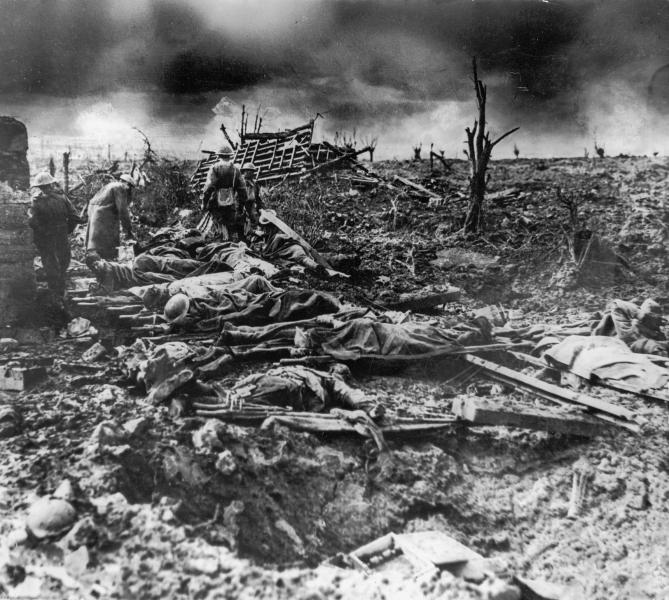WWI
was one of the most dramatic moments
throughout world history. Uses of trench warfare seemed to be a useless and
fearful military tactic as lines of soldier lay next to each other, cramped in
small crevasses, while the enemies (Germans) are attempting to annihilate their
foes (Americans, French, Britain, Russia, and Italy) with their newly found
technological machine, the machine gun.
This weapon simply devastated anybody who stands in its way with its rapid
firing rate, giving it an advantage to the weapons that constantly needed to be
reloaded. Though the war was stalemate, there were still problems growing
within the trenches, diseases developed as rodents scurried through the tight
spaces, and the decaying of corpses, leaving horrendous images in the minds or
soldiers. Many soldiers of the war witnessed their comrades getting torn into
pieces from gunfire or mines, seeing them die right in front of their eyes
scarred their mentality; eventually leading to PTSD. Meanwhile at their home
country, including America, nationalism
grew rapidly as propaganda encouraged young minds to fight and die for their country
by enlisting in the war.
 |
| The battle at Passchendaele. Photo by Adam Hochschild. |
Those
soldiers who were in the war and began to write their experiences were known as
the “Lost Generation”. An author named Wilfred Owen wrote a poem, Dulce Et Decorum Est (Sweet and Proper),
about his experience during the war, giving specific imagery such as, “He comes
at me, guttering, choking, drowning.” Giving explicit details about his
comrades and other soldier being killed in the line of duty, expressing the
emotions he possessed during the time through his poem, giving a fearful and
dramatic tone. I personally felt this way reading this, as if I was in the moment
Wilfred was in.
Modernism came during the 19th
and early 20th century, mainly in Europe and North America. It is
characterized by a self-conscious break with traditional styles of poetry and
verse. The Modernist literary movement was driven by the desire to disregard
traditional modes of representation and express the new sensibilities of their
time. Thinkers such as Sigmund Freud and Karl Marx questioned the rationality
of mankind, questioning it and seeing what it does in society.
Gertrude Stein was an American Modernist writer
who wrote unusual things, such as the autobiography of her partner, Alice B.
Tokas. It’s unusual in that, she wrote about an autobiography, (basically a
story about you) about another person. She also collected various Modernist arts
and placed it all around her house, which kind of became a museum of Modernist
art. Gertrude basically had “hangouts” at her salon, where many famous artists
came and mingled. It’s where Picasso and Matisse met, which began their
lifelong friendship.
| Pablo Picasso, Portrait of Gertrude Stein. |
Jazz came during the early 20th
century; this type of music was mainly improvised while playing, and was not as
well-constructed as classical music. Sidney Bechet was an American jazz
saxophonist, clarinetist, and composer who was one of the first important
soloists in jazz. Bachet recorded many works such as “Wild Cat Blues” and “Kansas
City Man Blues”. I found it interesting
that Bachet interpreted and played each of his works uniquely and with outstanding
creativity, which takes a large amount of work to accomplish. There was more
freedom in jazz by allowing each musician to have solos so that they are basically the “hero”
of the song, giving more energy into it.









0 comments:
Post a Comment